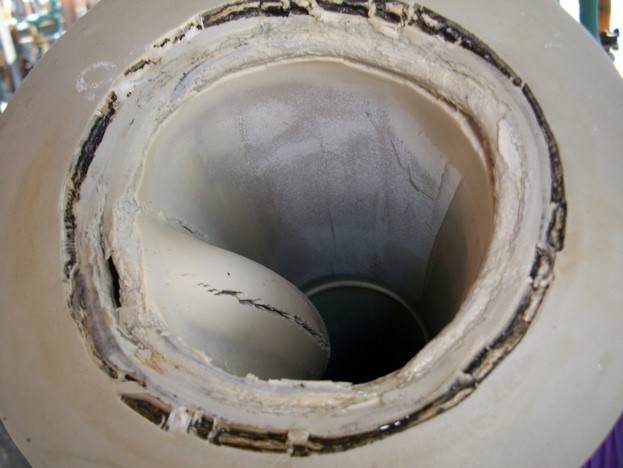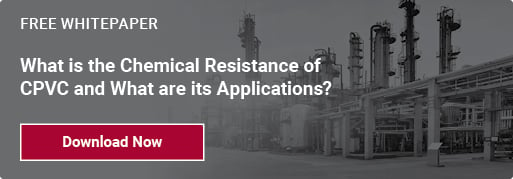Using FRP Overwrap in Thermoplastic Dual Laminate Piping
Engineers who design process piping systems often specify Corzan® CPVC because of its unparalleled resistance to many corrosive acids, caustics and salts at operating temperatures up to 200°F. Another reason is that the material offers a higher pressure rating over its useful temperature range than most other thermoplastic materials used for industrial piping.
Facilities that install systems with higher pressure ratings such as those made of Corzan CPVC gain more flexibility to deal with the changes in operating conditions that can be expected to occur in most chemical processing applications. But what options does a system designer have when a piping project not only needs the higher pressure rating and corrosion resistance properties of Corzan CPVC, but also must accommodate fluid temperatures that may exceed Corzan CPVC piping’s working range?
Overwrapping Corzan CPVC With FRP When Temperature Requirements Fluctuate
Increasingly, the practice in these situations is designing a dual laminate system where pressure-rated Corzan CPVC provides the corrosion-resistant layer of the composite, and is combined with a fiberglass reinforced plastic (FRP) overwrap layer for structural reinforcement to extend heat deflection temperature (HDT) to 239°F. We know of many applications that are using Corzan CPVC in dual laminates at temperatures 20 to 25°F higher than could otherwise be handled. This means that temperatures over 200°F can be achieved.
The fiberglass is applied with a bonding resin which, when cured, forms a solid exterior. The CPVC liner in turn provides the required chemical resistance to the ravages of the processing chemicals, which when combined with the FRP provides the structural integrity needed to meet the pressure rating and temperature requirements of the system. The result is a pipe that is both relatively lightweight and strong. Another bonus is that the fiberglass and resin materials can be engineered further to satisfy very precise pressure requirements.
It should also be noted that in standalone FRP piping, corrosion barriers are generally selected for specific chemicals and aren’t intended to perform beyond those parameters. But chemical processing streams are not pristine and outside chemicals can be present that compromise the FRP. Corzan CPVC piping will accommodate many different chemical families; view the Corzan Chemical Resistance Chart for Corzan CPVC's compatibility with 400+ chemicals.
Nonetheless, the particulars of how and when to use FRP on nonmetallic piping is an area professionals are seeking more guidance on today, which is why ASME is leading the charge to provide that guidance. ASME’s Committee on Nonmetallic Pressure Piping Systems has issued several standards (NM.1 and NM.3) related to the design, specification and installation of plastic pressure piping, and only recently did ASME issue the NM.2 standard addressing FRP specifically. Lubrizol Advanced Materials is serving on the ASME committee to develop that standard so that the industry has a consistent approach.
Future Guidance on FRP and Thermoplastics
In the meantime, it is crucial to keep in mind that the fabricator selected for the CPVC layer really matters, especially when specifying a dual laminate system. That manufacturer must have proven expertise in converting the material into high-performance piping. Corzan CPVC piping is manufactured only by a network of select partner manufacturers with the skill, material expertise and equipment to deliver product capable of upholding the integrity of the finished piping system for the duration of its design life.
It should always be communicated that proper engineering design, fabrication, and installation are required for long lasting performance. There are key milestones in the process that must be met regarding the proper specification, qualifications of bonders/welders, and QA programs of the fabricators. There are resources available to help you through the process.
Once the solution to process temperature fluctuations has been nailed down, the specifier can be confident in the knowledge that the facility professionals involved will enjoy maximum flexibility to adjust to changing operating conditions alongside the many other benefits of Corzan CPVC piping, benefits that position any project for success over a long service lifecycle in high-temperature, corrosive applications.
CTA: Find out how the chemical processing industry is using Corzan CPVC to extend system lifecycles and lower costs across numerous industrial segments.


